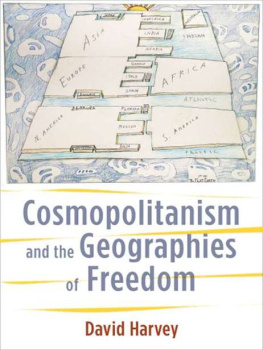
Frontispiece. Four terracottas of comic actors Courtesy British Museum.
Mon. A(ttic) T(erracotta) 9b (p. 46); BM 1865.7-20.37. Old nurse in a himation (mantle), holding a baby on her arm. The child is swaddled, and wears a pointed cap. Early 4th cent.; from Athens (?); height 7.5 cm.
Mon. AT 26b (p. 69); BM 1842.7-28.752. Herakles, cross-legged, with club, lionskin, bow and quiver. He wears a dotted chiton (tunic) and looped phallos; same mask as A. Early 4th cent.; from Melos; height 9 cm. From a mythological burlesque? (see Bowie in this volume, pp. 319-24).
Mon. AT 10c (p. 47); BM 1907.5-18.7. Woman hiding her face with her himation. Early 4th cent.; provenance unknown; height 9.5 cm.
Mon. AT 6b (p. 43); BM 1880.11-13.3. Traveller wearing cloak andpilos (pointed felt cap), carrying flask and basket. Looped phallos; same mask as B. He has a slightly aggressive attitude (Green & Handley 60). Early 4th cent. from Tanagra (?); height 9 cm.

THE RIVALS OF ARISTOPHANES

First published in 2000 by
Gerald Duckworth & Co. Ltd.
61 Frith Street, London W1V 5TA
(sole distributor outside N. America)
and
The Classical Press of Wales
Distributor in the United States of America:
The David Brown Book Co.
PO Box 511, Oakville, CT 06779
Tel: (860) 945-9329
Fax: (860) 945-9468
Originated and prepared for press at
The Classical Press of Wales
15 Rosehill Terrace, Swansea SA1 6JN
Tel: 01792 458397
Fax: 01792 419056
2000 The contributors
All rights reserved. No part of this publication may be reproduced, stored ina retrieval system, or transmitted, in any form or by any means, electronic,mechanical, photocopying, recording or otherwise, without the prior permissionof the publisher.
ISBN 07156 30458
A catalogue record for this book is available from the British Library
Typeset by Ernest Buckley, Clunton, Shropshire
Printed and bound in the UK by Biddles Ltd., Guildford, Surrey
CONTENTS
Jonathan Swift
John Wilkins
Kenneth Dover St Andrews
I. MANUSCRIPTS
W. Geoffrey Arnott University of Leeds
II. POETS
Wolfgang Luppe Martin-Luther-Universitat, Halle
Ralph M. Rosen University of Pennsylvania
James Davidson University of Warwick
S. Douglas Olson University of Minnesota
Dwora Gilula Hebrew University, Jerusalem
David Harvey University of Exeter
Jeffrey Henderson Boston University
David Braund University of Exeter
Giorgos Kavvadias Third Ephorate of Classical Antiquities, Athens
Wolfgang Luppe and Ian C. Storey
Ian C. Storey Trent University, Ontario
Themistocles exile, hero-cult and delayed rehabilitation Pericles and the origins of the Peloponnesian War Thomas Braun Merton College, Oxford
III. OLD COMEDY TO MIDDLE COMEDY
Heinz-Gunther Nesselrath University of Berne
Keith Sidwell University College, Cork
IV. LITERARY THEMES
N.J. Lowe Royal Holloway College, University of London
Bernhard Zimmermann Albert-Ludwigs-Universitat, Freiburg with a response by David Harvey
Stephen Colvin Yale University
Michael Silk Kings College, London
V. SOCIAL THEMES
Angus Bowie Queens College, Oxford
John Wilkins University of Exeter with an aegological note by Oliver Rackham, Corpus Christi College, Cambridge
Nick Fisher University of Wales Cardiff
Andrew Dalby St Couton, France
Edith Hall Somerville College, Oxford
Christopher Carey Royal Holloway College, University of London
Alan H. Sommerstein University of Nottingham
Paola Ceccarelli University of lAquila, Abruzzi
Ian Ruffell Christ Church, Oxford
Kenneth Dover, W.G. Arnott, N.J. Lowe, David Harvey
Ian C. Storey
Frontispiece. Four comic actor terracottas (nos. 1, 2, 3, 4)
A page from the codex unicus of Athenaeus 5
Kratinos and KSmSidia? 21
Phrynichos 91
The discovery of the new portrait-herm of Eupolis 160
POxy. 4301: a new fragment of Eupolis 165
Pyronides and Phrynis: a scene from Eupolis Demoi? 178
The New York Goose Play 294
Maligned goats 350
A puzzling symposium from Athens 381
A comic symposium from Thebes. 382
Amphoras and amphora stamps 400/401
Terracottas. Line-drawings of comic actor terracottas by Myfanwy Tristram
A xiv; B xx; C 162; D 340; E 406; F 526
The terracotta figurines of comic actors
Numerous terracotta figurines representing comic actors have survived from antiquity, and some have been used to illustrate this volume. One group serves as our frontispiece, and line-drawings of others will be found elsewhere. The figurines were made in Athens, and later in other places too, from moulds that could produce numerous identical copies. The clay was covered with a white slip before firing, and afterwards painted in bright colours, traces of which sometimes survive (details in Green 36). It would be interesting to create and paint some replicas, so as to recapture the original effect. Those that we illustrate are between 7.5 to 12 cm (roughly 3 to 5 inches) high; one (E) is larger (17 cm = nearly 7 inches).
Both sexes are depicted. Their bellies and bottoms are padded, a long-standing tradition going back to the seventh century. This was (presumably) considered funny in itself, but it would also protect the actor in more boisterous scenes, such as those which involved beatings and pratfalls. The men generally wear a chiton (short tunic), which exposes the leather phallos that was characteristic of Old Comic costume, worn to make the little boys laugh, according to Aristophanes (Clouds 539), though in fact of ritual origin (DFA 220-2). It was normally rolled up in a loop (2, 4, A, B, D, F), but sometimes left to dangle. The women have longer dresses and cloaks, and preserve the decencies.
The terracottas make use of a limited range of forty-odd masks (Monuments 1326; DFA 21820): thus Herakles has the same mask in and A, and so do figurines and B. This does not imply that the dramatists of Old and early Middle Comedy restricted themselves to a similarly limited range of standard characters.
One of the most important finds is a group of fourteen found in a single tomb in Athens, now in the Metropolitan Museum in New York (Mon. pp. 4560; illustrated in Bieber 1961 pp. 467). It is no longer believed that these (or any others) formed a set illustrating a single play.
These figurines were enormously popular, and not only in Attica: they are found all over mainland Greece, the islands of the Aegean, Asia Minor, South Russia (the Taman region), Cyrenaica, south Italy, Sicily (including the Lipari islands), even Spain (details in Mon. and Green 645). We are rarely well informed about the contexts in which they were discovered. People will have kept them at home as souvenirs of performances, as we know from those found at Olynthos, but they were also placed in graves to commemorate the interests of the deceased.


















